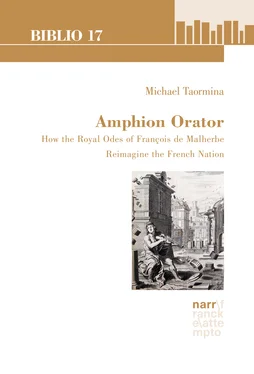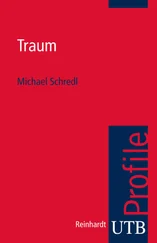Michael Taormina - Amphion Orator
Здесь есть возможность читать онлайн «Michael Taormina - Amphion Orator» — ознакомительный отрывок электронной книги совершенно бесплатно, а после прочтения отрывка купить полную версию. В некоторых случаях можно слушать аудио, скачать через торрент в формате fb2 и присутствует краткое содержание. Жанр: unrecognised, на английском языке. Описание произведения, (предисловие) а так же отзывы посетителей доступны на портале библиотеки ЛибКат.
- Название:Amphion Orator
- Автор:
- Жанр:
- Год:неизвестен
- ISBN:нет данных
- Рейтинг книги:4 / 5. Голосов: 1
-
Избранное:Добавить в избранное
- Отзывы:
-
Ваша оценка:
- 80
- 1
- 2
- 3
- 4
- 5
Amphion Orator: краткое содержание, описание и аннотация
Предлагаем к чтению аннотацию, описание, краткое содержание или предисловие (зависит от того, что написал сам автор книги «Amphion Orator»). Если вы не нашли необходимую информацию о книге — напишите в комментариях, мы постараемся отыскать её.
Amphion Orator — читать онлайн ознакомительный отрывок
Ниже представлен текст книги, разбитый по страницам. Система сохранения места последней прочитанной страницы, позволяет с удобством читать онлайн бесплатно книгу «Amphion Orator», без необходимости каждый раз заново искать на чём Вы остановились. Поставьте закладку, и сможете в любой момент перейти на страницу, на которой закончили чтение.
Интервал:
Закладка:
The early seventeenth century was certainly no Golden AgeGolden Age of poetry. Malherbe did not, as a result of his odes, wield any political authority, although that did not stop him from pursuing pleasure, privilege, and fame alongside his social superiors. Already in 1630, the year Malherbe’s complete works were posthumously published, the elevated themes and style of the odes had started to look tiresome, and their attempt to reimagine the nationnation was not taken seriously—if readers were even aware of it. “If the writing of encomiasticencomiumencomiastic poetry odes quickly turns to repetitive formulas and to academic exercise, becoming a pretext for essays and polemics among specialists, this is surely because its finality is increasingly less perceptible, and because a divide opens up between the means of expression handed down by literary tradition and the real aspirations of the social group at whom this literature is aimed” (Chauveau 66). Chauveau and others have noted how lyriclyric poetry poems of the early seventeenth century turn away from the implicit comparisoncomparisons anchored in classical and biblical poetry that inform the royal odes. Poetry was migrating away from courtcourt (royal) to aristocratic salonsalonss, where poets and poetasters composed lyriclyric poetrys exploring the refinements of honnête honnête hommehonnêteté té [nobilitynobility] and galanterie [flirtatiousness]. Malherbe frequented the Hôtel de Rambouillet [the Rambouillet Townhouse] as early as 1615, but “between Malherbe and the other poets of the seventeenth century [i.e. Voiture, Sarasin, Corneille, etc.], there existed little personal contact at the Hôtel” (Abraham, “Malherbe et l’Hôtel” 84). What is more, a new political and cultural climate was emerging in the 1630s, shaped by such momentous events as the siege of La RochelleLa Rochelle (1627-1628), France’s entry into the Thirty Years War (1635), and La Querelle du Cid [The Quarrel of the Cid] (1637) which led to the publication of Chapelain’s Sentiments de l’Académie sur le ‘Cid’ [ The Academy’s Opinions on the ‘Cid’ ] (1638). Heroic novels, the tragedies of Corneille, literary criticism, conversation, and light verse now preoccupied the literati. Aristocratic taste had moved on.
Undoubtedly, the audience for Malherbe’s royal odes had always been select, and the scope of their impact limited, but Malherbe, despite his sardonic quips, never conceived his work as a minor art. On the contrary, the odes fearlessly engage the issues that most concerned ruling elites in the early seventeenth century: the proper functions of kingship, the political stability and economic prosperity of the kingdom, the crisis of noble identitynobilityidentity, the political authority of women, and the imperial ambitions of the Habsburgs. The odes’ highest purpose is to reimagine the nationnation—indeed, to call into being a new national communitynationnational community. To say that they are ideological is to insist that they make claims about the way things are, affirm the values and beliefs of a dominant social group, and present a patriotic vision of the nationnation risen from the ashes of the civil war. Much more is at stake in Malherbe’s odes than questions of style, but those stakes are always filtered through style.
Although this book is a work of historical criticism in French literature, I have tried to make it accessible to anyone who might take a comparatist’s interest in early modern poetry. I have generously quoted and translated the odes and the critical literature whenever it was appropriate. Indeed, I hope that anyone who loves poetry will be fascinated by the pomp and elegance of Malherbe’s royal odes, their profound erudition, wild flights of imagination, and direct engagement with the powerful. Malherbe is the consummate craftcraftsman, and his odes generously repay detailed analysis. But the path to appreciation requires that we understand how the odes work, and for that one cannot lose sight of their political, cultural, and rhetorical contexts. The imposition of historically alien values and expectations, whether of the later seventeenth century, or of our own era, merely ends up obscuring what is most astonishing in this poetry. These odes indeed have the power to astonish—that was one of their goals—if only we will deign to learn their language and to dream their dreams.
Part I Praising the Great Soul
This section of the book resuscitates the historical conventions, cultural assumptions, and critical terms necessary to appreciate the unique achievement of Malherbe’s royal odes. Its focal point is the megalopsychos magnanimitymegalopsychos, the Aristotelian great soulmagnanimitygreat soul ( NE 4.3), because it is both an ethosethos and a virtuevirtue, and because it was considered the wellspring of la grande éloquence [the grandstylegrand style]. Chapter 1 examines how the ethosethos of magnanimitymagnanimity, modeled on Henri IV, encompasses and defines the members of the body politicbody politic. Chapter 2 asks how the virtuevirtue of magnanimitymagnanimity shapes the conceptions of monarchypolitymonarchy and the national communitynationnational community. Chapter 3, the longest of these three, investigates the rhetorical climate and the hybrid genus dicendi of the royal odes to contextualize their version of the grandstylegrand style. There was no way to define and to develop the notions of ethosethos, virtuevirtue, and eloquenceeloquence, to relate them to the historical context, and to show how they organize the composition—one might say, the enunciation—of the royal odes, while at the same time explicating in a clear and coherent way such highly complex poems. Such a division allows the concepts and arguments presented in Part I to be used without excessive comment in the close reading of the royal odes in Part II.
Chapter 1. Literary Patronage
Although, technically speaking, Malherbe was the client of Roger de Saint-Lary de Termes, seigneur de BellegardeBellegarde, Roger de Saint-Lary de Termes, seigneur de (1562-1646), Grand Écuyer de France [Master of the Horse], in whose service the poet received a cash stipend, table and board, horse and valet (Adam, Poésies 263), it was understood that Malherbe was the king’s “man.” In addition to “écuyer du roi” [equerry of the king], Malherbe was named “gentilhomme ordinaire de la chambre” [official gentleman of the royal bedchamber] (Adam, Poésies 223). BellegardeBellegarde, Roger de Saint-Lary de Termes, seigneur de, a great lord from a powerful military family, was himself a loyal client of Henri IV. When the mortally-wounded Henri III recognized Henri of Navarre as his successor in 1589, BellegardeBellegarde, Roger de Saint-Lary de Termes, seigneur de without hesitation transferred his allegiances to the new king and valiantly fought by his side to help him secure control of the monarchy. After the death of Henri IV, the queen regent declared Malherbe the recipient of a royal pension in 1611, and Louis XIII reaffirmed this patron-client relationship in 1622 and again in 1624. The difficulty that Malherbe experienced in getting the royal treasury to honor these financial commitments may have led to the interruption of his work on the sequence in 1613, and it may explain the self-interested praise and solicitation of later odes.
The personal ties between Henri IV and Malherbe, mediated by BellegardeBellegarde, Roger de Saint-Lary de Termes, seigneur de, belong to the diffuse and particularistic network of personal relationships known as patronage . One of those unfamiliar but essential practices of early modern France, patronage needs some explanation if a twenty-first-century reader is to appreciate how its assumptions and conventions inform the composition of the royal odes. Fortunately, Peter W. Shoemaker’s important book, Powerful Connections: The Poetics of Patronage in the Age of Louis XIII , offers a compelling and nuanced analysis of this fundamental cultural practice which may be adapted, with small changes, to Malherbe’s royal odes, half of which were composed during the reign of Henri IV. The most important adaptation concerns the particularistic “audience of one,” which Shoemaker sees at work in all patronage texts. While this notion is certainly determinative for the royal odes (their patrons are Henri, Marie, and Louis, with one long ode addressed to BellegardeBellegarde, Roger de Saint-Lary de Termes, seigneur de), one must recall that a monarch constitutes a special kind of patron, since he or she embodies an audience of more-than-one : this is because a monarch cannot in principle be limited to a single body but always includes the body politicbody politic of the nationnation.1 The royal odes written for the king, or the queen, frequently address him or her directly, but they are also addressed through the monarch to the nationnation and, often, are aimed at the great nobilitynobility in particular, a key constituency of the nationnation. The ode to BellegardeBellegarde, Roger de Saint-Lary de Termes, seigneur de is an indirect appeal to the latter. Starting from the historical practice of patronage, this chapter shows how the monarch’s person (one of the three particulars of decorum: time, place, and persons) implies an imagined community of addressees.
Читать дальшеИнтервал:
Закладка:
Похожие книги на «Amphion Orator»
Представляем Вашему вниманию похожие книги на «Amphion Orator» списком для выбора. Мы отобрали схожую по названию и смыслу литературу в надежде предоставить читателям больше вариантов отыскать новые, интересные, ещё непрочитанные произведения.
Обсуждение, отзывы о книге «Amphion Orator» и просто собственные мнения читателей. Оставьте ваши комментарии, напишите, что Вы думаете о произведении, его смысле или главных героях. Укажите что конкретно понравилось, а что нет, и почему Вы так считаете.












